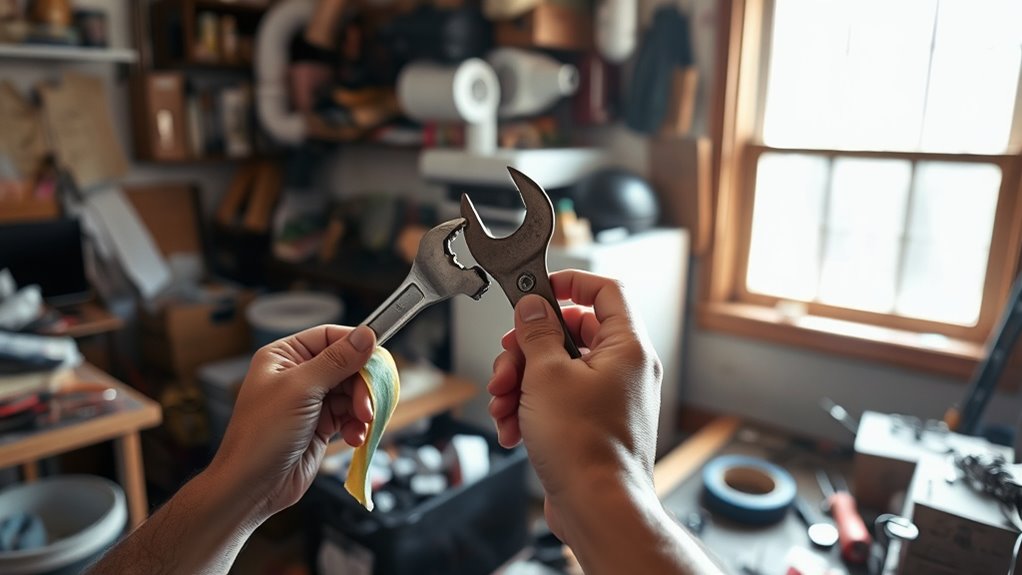Quick fixes can backfire if you skip safety precautions, use the wrong tools or materials, or rush without proper planning. Ignoring manufacturer guidelines and failing to assess the root cause can lead to bigger problems or safety hazards. Overconfidence and underestimating repair complexity often result in costly mistakes. Considering long-term effects is essential to avoid future issues. Keep these mistakes in mind, and you’ll discover how to make smarter, safer repairs every time.
Key Takeaways
- Overestimating your skills can lead to incomplete or unsafe repairs, causing future issues.
- Skipping safety precautions increases the risk of injuries from debris, splashes, or electrical hazards.
- Using incorrect tools or materials compromises the repair’s durability and might worsen the problem.
- Ignoring repair complexity and long-term impacts can result in recurring issues or costly damage.
- Rushing without proper planning or professional advice can turn a quick fix into a bigger, more expensive problem.
Overlooking Safety Precautions
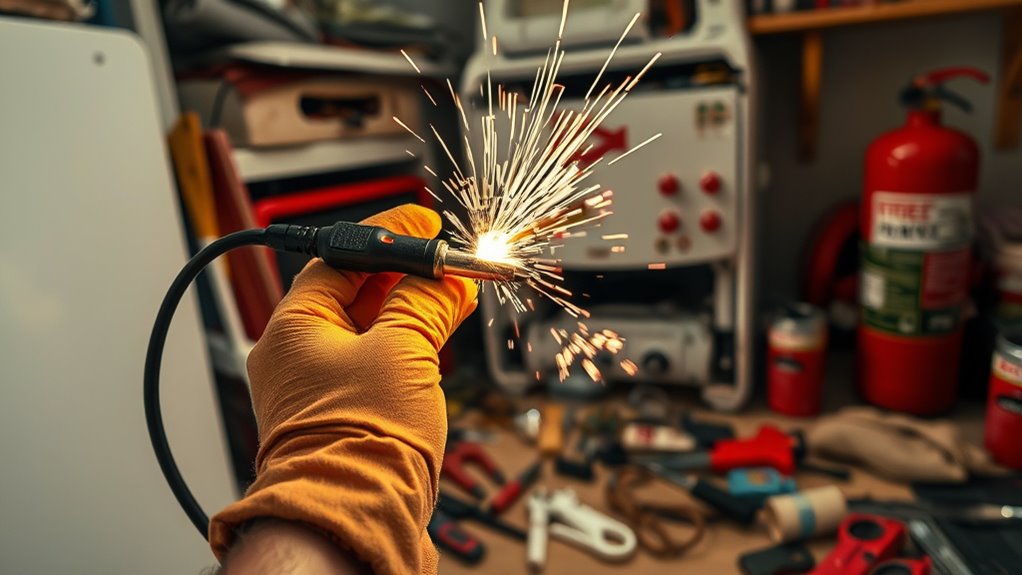
Neglecting safety precautions can lead to serious accidents and injuries during DIY projects. Wearing protective gear like gloves, goggles, and masks shields you from hazards such as flying debris, chemical splashes, and dust inhalation. Always review emergency procedures before starting any task, so you know how to respond quickly if something goes wrong. Failing to prioritize safety increases the risk of cuts, burns, or more severe injuries. Make sure your workspace is well-ventilated, and keep a first aid kit nearby. Don’t take shortcuts with safety measures—your health and safety depend on it. Planning ahead and adhering to safety protocols helps prevent accidents, ensuring your project remains a safe and successful experience. Unplanned weather changes can also create unexpected hazards, so stay alert and prepared for changing conditions.
Using the Wrong Tools or Materials

Using the wrong tools or materials can quickly compromise the quality and safety of your DIY project. Incorrect tool selection often leads to mistakes, damage, or injuries because the tool doesn’t match the task. For example, using a dull saw or a mismatched screwdriver can cause slips or uneven cuts. Similarly, employing incompatible materials can result in poor adhesion, cracking, or failure. Always check the specifications of tools and materials before starting. Using substandard or inappropriate supplies might seem like a time-saver, but it usually causes more problems down the line. To avoid costly mistakes, invest in the right tools and guarantee your materials are suitable for the project’s requirements. Proper tool selection keeps your work safe, durable, and professional-looking.
Skipping Proper Planning and Preparation
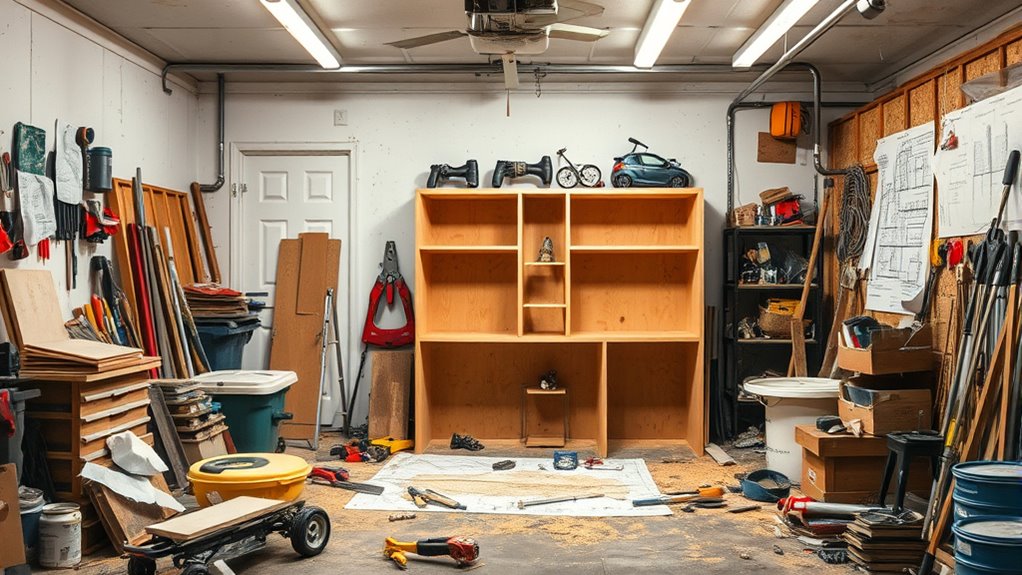
Failing to plan and prepare properly can turn a straightforward DIY project into a frustrating and costly ordeal. Planning mistakes and preparation oversights often lead to missed steps, unexpected issues, and wasted resources. Before starting, list all needed tools, materials, and steps to avoid rushing or forgetting vital tasks. Skipping this stage increases the risk of errors and accidents. Additionally, understanding the Pimple Patch technology and ingredients can help you choose the most effective products for your skin type.
Taking these steps ensures you avoid common pitfalls and set yourself up for success. Proper planning saves time and money in the long run.
Ignoring Manufacturer Guidelines

Ignoring manufacturer guidelines can lead to serious safety risks and mistakes. You might overlook important warnings or use the wrong tools, which can cause damage or injury. Always follow the instructions carefully to make sure your project is safe and successful. Additionally, neglecting recommended settings or maintenance procedures can reduce the lifespan of your equipment and compromise the quality of your work airless paint sprayer reviews and comparisons.
Overlooking Safety Warnings
Neglecting safety warnings can lead to serious accidents or damage that could have been easily prevented. Always pay attention to warning labels on tools and equipment—they’re there for your protection. Ignoring these labels might mean missing essential instructions about safety gear or correct procedures. Skipping safety gear, like gloves or goggles, increases your risk of injury. Manufacturers include safety warnings to highlight hazards and proper handling procedures; overlooking them puts you in danger. Before starting any project, read and understand all safety instructions. Failing to do so might result in mishaps, property damage, or even long-term health issues. Additionally, being aware of cultural impacts related to DIY safety can help you better understand the importance of following guidelines. Remember, safety warnings are not optional—they’re vital for avoiding accidents and ensuring your DIY efforts are safe and successful.
Using Wrong Tools
Using the wrong tools for a project can cause accidents, damage your materials, or produce subpar results. Tool compatibility is essential; mismatched tools may not handle specific tasks properly, leading to frustration or failure. Always consider material selection when choosing tools—using a drill on delicate wood or brittle materials can cause splintering or cracks. Ignoring manufacturer guidelines often results in selecting inappropriate tools, which can compromise safety and quality. Before starting, review the recommended tools for your project, ensuring they match both the task and the material. Using the correct tools not only improves efficiency but also prolongs your tools’ lifespan. Proper Paint Sprayer Maintenance is crucial to keep equipment functioning correctly and to prevent costly repairs. Don’t compromise on tool compatibility or material selection—these are key to a successful, safe DIY project.
Rushing Through the Fix

Rushing through your repair can lead to costly mistakes and even safety hazards. When you opt for a quick fix without taking the time to carefully assess the problem, you increase the risk of overlooking important details. A rushed approach might seem like a shortcut, but it often results in incomplete or improper repairs. You may temporarily resolve the issue, only for it to reappear later or worsen. Hurrying can also cause you to misjudge the necessary steps or use the wrong materials, making the repair more complicated and expensive in the long run. To avoid these pitfalls, take your time, follow the proper procedures, and double-check your work. A deliberate, careful approach ensures your fix lasts longer and keeps you safe. Additionally, understanding the importance of aquatic exercise can help you approach water-related repairs with a more patient and informed perspective.
Failing to Assess the Root Cause
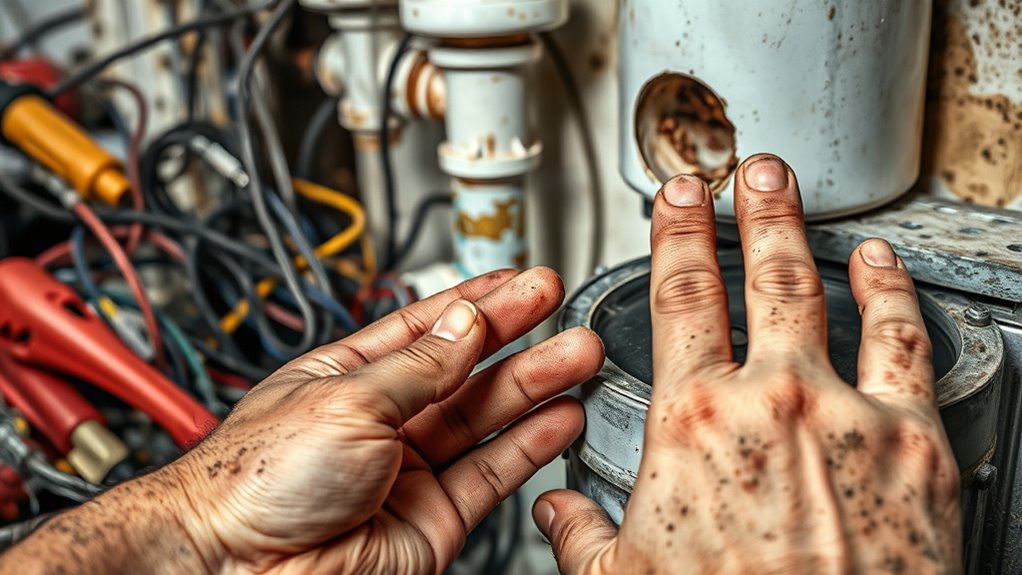
Before attempting any repair, it’s essential to identify the underlying cause of the problem rather than just addressing its symptoms. Failing to do so leads to diagnostic oversight, where you might focus on surface issues instead of what’s really broken. This often results in symptom misinterpretation, causing you to apply a quick fix that doesn’t solve the core problem. For example, replacing a faulty switch without understanding why it failed may only provide a temporary fix. Without proper assessment, you risk repeating the same mistake or causing further damage. Take the time to investigate thoroughly, ask questions, and consider all possible causes. Doing so ensures your repair targets the root cause, preventing future issues and saving you time and money. Recognizing the importance of analyzing the root cause can help you make more informed decisions and prevent unnecessary repairs.
Neglecting Professional Advice When Needed
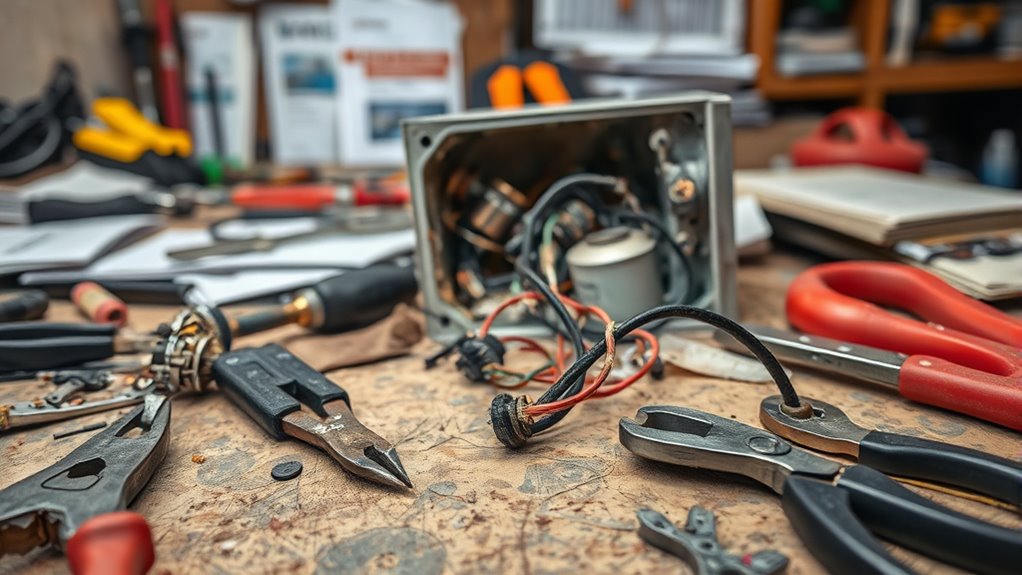
You might think you can handle everything on your own, but overestimating your skills can lead to costly mistakes. Ignoring expert advice or recommended procedures often results in problems you could have avoided. When in doubt, it’s smarter to seek professional guidance before proceeding. For example, attending a hackathon can provide valuable insights and mentorship that help you avoid common pitfalls in project development.
Overestimating DIY Skills
While confidence is important for tackling DIY projects, overestimating your skills can lead to costly mistakes. Relying solely on your DIY confidence without honest skill assessment can result in errors that are hard to fix later. It’s easy to get carried away, thinking you can handle complex tasks without professional help. Remember, even experienced DIYers sometimes underestimate challenges or overestimate their abilities. Before starting, honestly evaluate your skills and know your limits. If a project requires specialized knowledge or tools, don’t hesitate to seek expert advice. Recognizing when to call in a professional saves you time, money, and potential frustration. Being realistic about your skills ensures you avoid mistakes that could have been prevented with proper skill assessment upfront. Additionally, understanding pregnancy-related risks can help you make better-informed decisions about when to consult professionals.
Ignoring Expert Recommendations
Overestimating your DIY skills can make it tempting to ignore expert advice, especially when you believe you can handle a project on your own. Skipping professional recommendations might seem like a quick fix, but it often leads to amateur repairs that worsen the problem. To visualize, picture this table:
| Skill Level | Approach | Result |
|---|---|---|
| Beginner | DIY shortcuts | Temporary fix, potential damage |
| Intermediate | Followed advice | Efficient, lasting repair |
| Amateur | Ignored advice | Costly mistake, rework needed |
Ignoring expert advice risks creating more issues than you solve. When you bypass professional input, you might save time initially but pay later with costly repairs. Trusting expert recommendations ensures your DIY efforts are safe, effective, and long-lasting.
Underestimating the Complexity of Repairs

Many DIY enthusiasts jump into repairs thinking they can handle any problem without fully understanding its complexity. Without the necessary technical knowledge, you might overlook hidden issues or misjudge the scope of work. Relying solely on basic repair experience can lead you to underestimate the tools, skills, or time needed for a proper fix. Complex repairs often involve intricate components or systems that require specialized techniques. Skipping this understanding can result in incomplete repairs, further damage, or safety hazards. Before starting, assess the problem carefully. Recognize when it’s beyond your skill level and consider consulting manuals, tutorials, or professionals. Underestimating the complexity can turn a quick fix into a costly, time-consuming mistake. Always respect the intricacies involved in repairs to avoid unnecessary setbacks.
Not Considering Long-Term Consequences
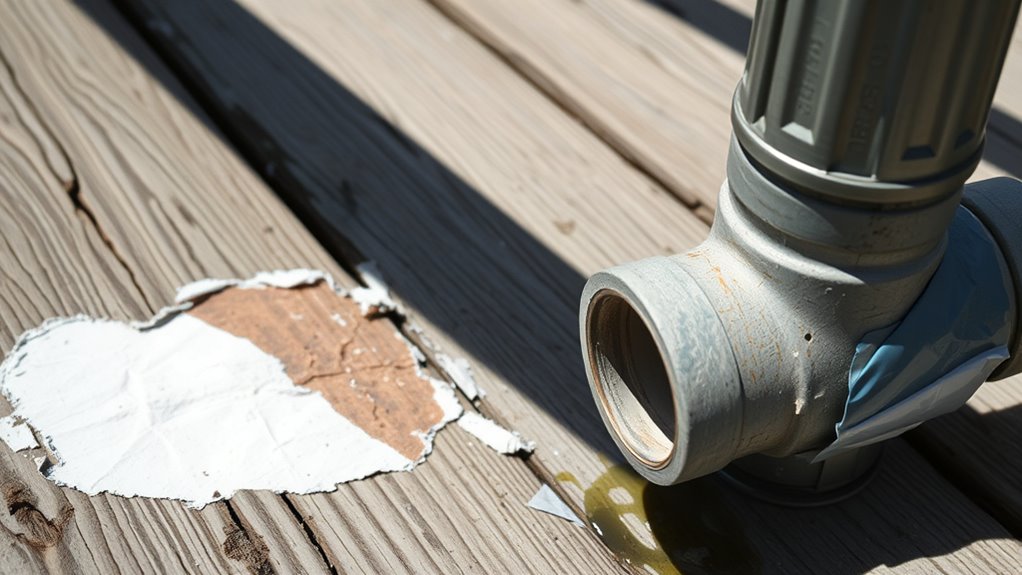
Failing to contemplate the long-term consequences of your repairs can lead to even bigger problems down the line. Opting for costly shortcuts or temporary solutions might seem like a quick fix, but they often cause more damage later. You risk creating issues that require expensive repairs or replacements if you ignore future impacts. For example, a quick patch on a leaking pipe might hold temporarily but could lead to mold or structural damage. Consider how your short-term fix might affect the durability, safety, and efficiency of your home or project.
- Increased repair costs later
- Reduced safety and stability
- Shortened lifespan of repairs
- Potential for more extensive damage
- Higher energy bills or inefficiency
Frequently Asked Questions
How Can I Tell if a DIY Repair Is Worth Trying?
You should consider if a DIY repair is worth trying by evaluating the DIY hazards involved and potential repair costs. If the task seems complex or risky, it’s better to avoid it yourself. Think about whether you have the right tools and skills, or if mistakes could lead to more damage and higher repair costs later. When in doubt, consulting a professional can save you time, money, and stress.
What Are Common Signs I Should Call a Professional?
Thinking of tackling that repair yourself? Beware the DIY pitfalls! Warning signs you should call a pro include persistent leaks, strange noises, or if your fix suddenly worsens the problem. If you’re feeling overwhelmed or unsure, it’s a clear signal to seek expert help. Ignoring these signs risks bigger damage and costly repairs down the line. Trust your instincts—sometimes, calling in a professional is the smartest fix.
How Do I Identify Hidden Damages During Repairs?
To identify hidden damages during repairs, use thorough inspection techniques like probing with a flashlight or moisture meter. Look for warning signs such as discoloration, soft spots, or unusual odors. Carefully examine areas surrounding visible damage, as issues often extend beyond what’s immediately apparent. Staying vigilant and employing proper inspection methods helps you catch hidden problems early, preventing costly repairs later and ensuring your DIY fix doesn’t cause more damage.
What Safety Gear Is Essential for Home Repairs?
Ever find yourself working on home repairs and realize safety gear isn’t an afterthought? You should always wear protective clothing and safety glasses to shield yourself from debris, splashes, or sparks. These essentials prevent injuries and keep your focus sharp. Don’t wait for an accident to remind you—invest in proper safety gear before starting. It’s a simple step that guarantees your DIY projects stay safe and successful.
How Can I Prevent Future Problems After a Quick Fix?
To prevent future problems after a quick fix, focus on turning it into a long term solution. You should regularly inspect the repair, address any signs of wear or damage promptly, and avoid relying solely on quick fixes for major issues. Always consider whether a more durable, permanent repair is needed. This proactive approach helps you avoid recurring problems and maintains your home’s safety and functionality over time.
Conclusion
If you rush, skip safety, or ignore the details, your quick fix could turn into a bigger problem. Sometimes, what seems simple hides hidden complexities that only reveal themselves later. Before you leap in, ask yourself—are you truly prepared? The next step could change everything. Don’t let a small mistake escalate. The true challenge isn’t just fixing it now, but understanding what’s lurking beneath the surface—because one overlooked detail might be your undoing.
